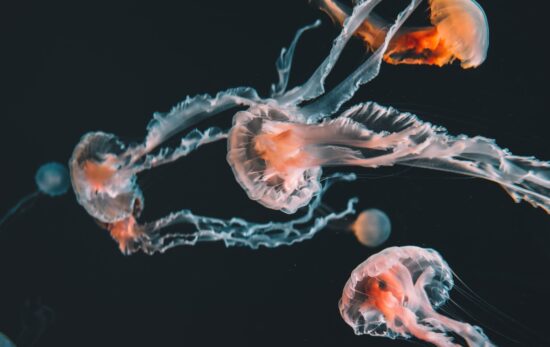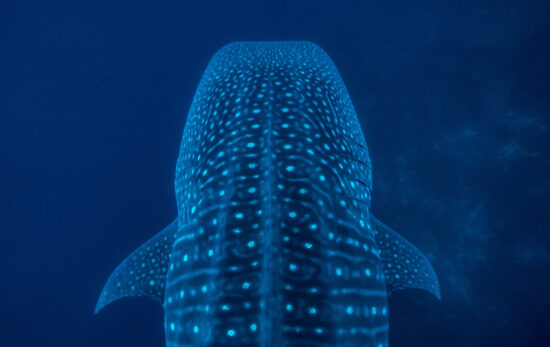In light of October and Halloween, we wanted to introduce you to some marine animal mimics that are “always in costume.”
According to the History Channel, Halloween costumes originated with the ancient Celtic festival of Samhain. People lit bonfires and dressed up to ward off ghosts. The church eventually adopted some Samhain traditions into what became All Hallows Eve (Oct. 31) and All Saints Day (Nov. 1). The former evolved into the Halloween that we know, with costume-wearing remaining central to modern-day celebrations.
In the ocean, animals don’t wear costumes to ward off scary things. Instead, many have evolved to superficially resemble other species that they are not closely related to taxonomically. We call this survival technique mimicry. In mimicry, the mimic (the copycat) and/or the model (the species being copied) find an advantage. The best-known examples of this phenomenon involve similar physical appearances, but scientists have found cases of sound, smell, behavior and even biochemical mimicry.
There are several types of mimicry that scuba divers can observe in the sea. We will cover a few of the most well-known mimics. Now, let’s dive deeper with some of the ocean’s best costume artists.
Mimic Octopus (Batesian Mimicry)
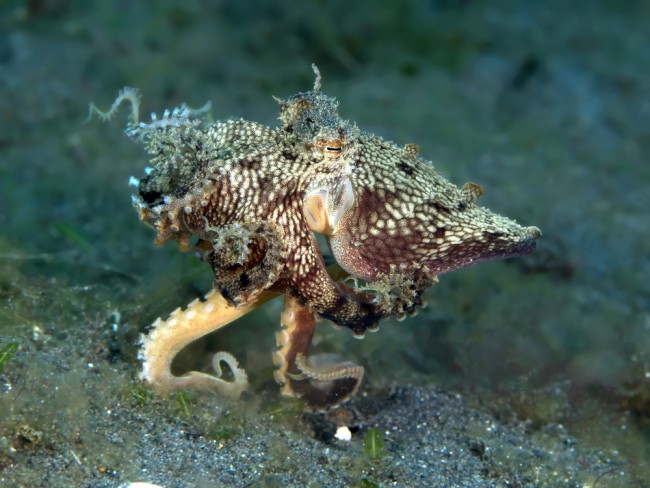
With “mimic” in its name, it’s no surprise that the mimic octopus is our first featured feigner. The octopuses use mimicry to safely move across open sand. This cephalopod changes its color and texture as well as how it moves its arms to trick and evade its predators. Scientists believe it can impersonate up to 15 different species. These include venomous lionfish, poisonous sole and deadly sea snakes. Moreover, researchers think the mimic octopus chooses what animal to copy based on what is hunting it; it copies the model least-palatable to that particular predator.
This is a highly evolved form of “defensive mimicry” called Batesian mimicry. It involves a harmless species imitating the warning signs of a harmful species. The mimic octopus uses a mix of colors, textures and shapes to look like a harmful species that predators avoid. Predators that have learned to avoid these harmful species will then leave the mimics alone.
Comet/Marine Betta (Batesian Mimicry)
-

Marine comet will hide their heads in the reef and use their tails and eyespots to resemble white-mouthed moray eels. Courtesy of George Berninger Jr. -
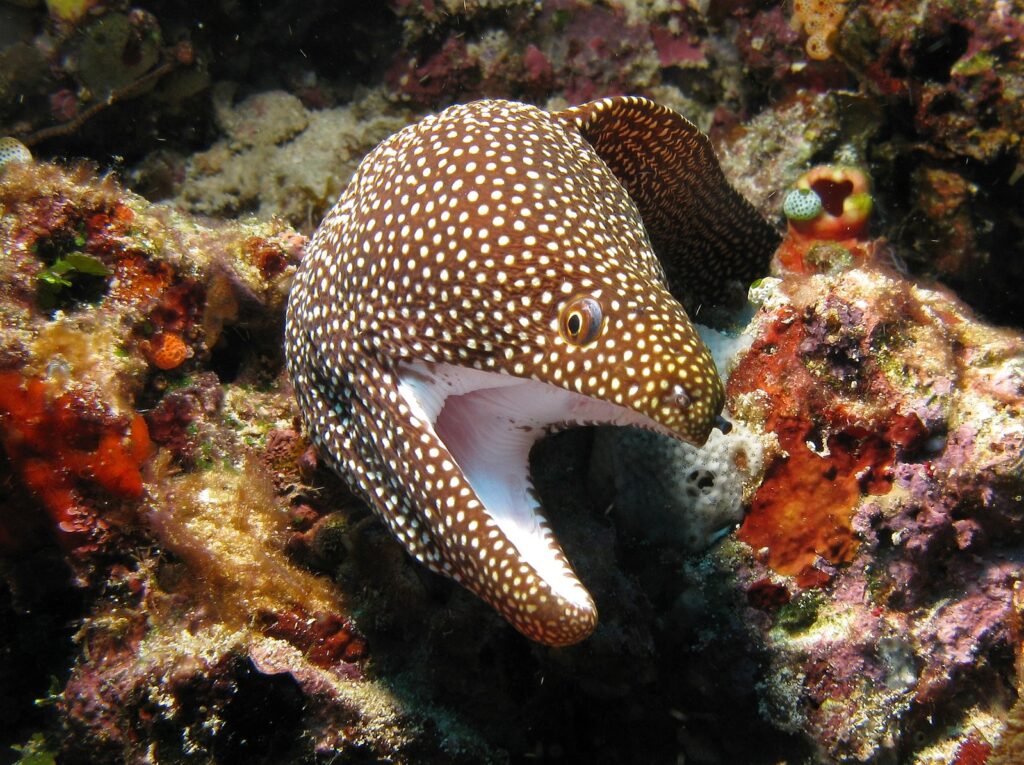
The white-mouth moray eel is feared as a reef predator. Courtesy of Prilfish
The comet or marine betta is another clever counterfeiter. When threatened, the comet will swim partway into a hole in the reef. Then, it expands its tail and leaves it in full view. The comet is brown with white spots and has a distinct “eyespot” marking on the edge of its dorsal fin. The fish evolved to take this “defensive” posture because its body, with these colors and patterns, and in this shape, bears a striking resemblance to the head of a white-mouth moray eel. We usually find eels similarly sticking out of the reef with just their heads. Since eels are not creatures to mess with, the comet keeps itself safe by mimicking this predator.
Sea Slugs (Müllerian Mimicry)
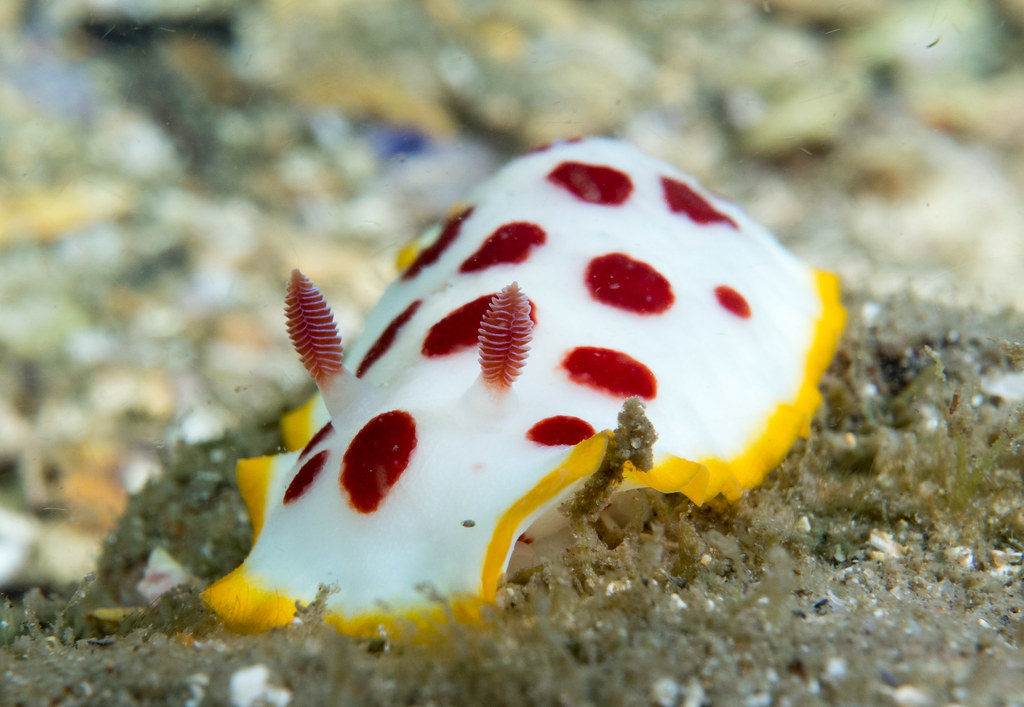
In Müllerian mimicry, the other type of “defensive mimicry,” two dangerous or untasty species copy each other’s warning signs. This helps each species take advantage of predators’ learning to avoid the other.
For example, a 2018 University of Queensland study found Müllerian mimicry in several species of red-spotted sea slugs along the Australian coast. Different species shared the same patterns and colors despite having different chemical defenses and not being closely related to each other.
To fish predators, the red-spotted groups all look similar, the lead researcher said. This eventually teaches the fish to avoid all similarly-spotted sea slugs.
Frogfish (Aggressive Mimicry)
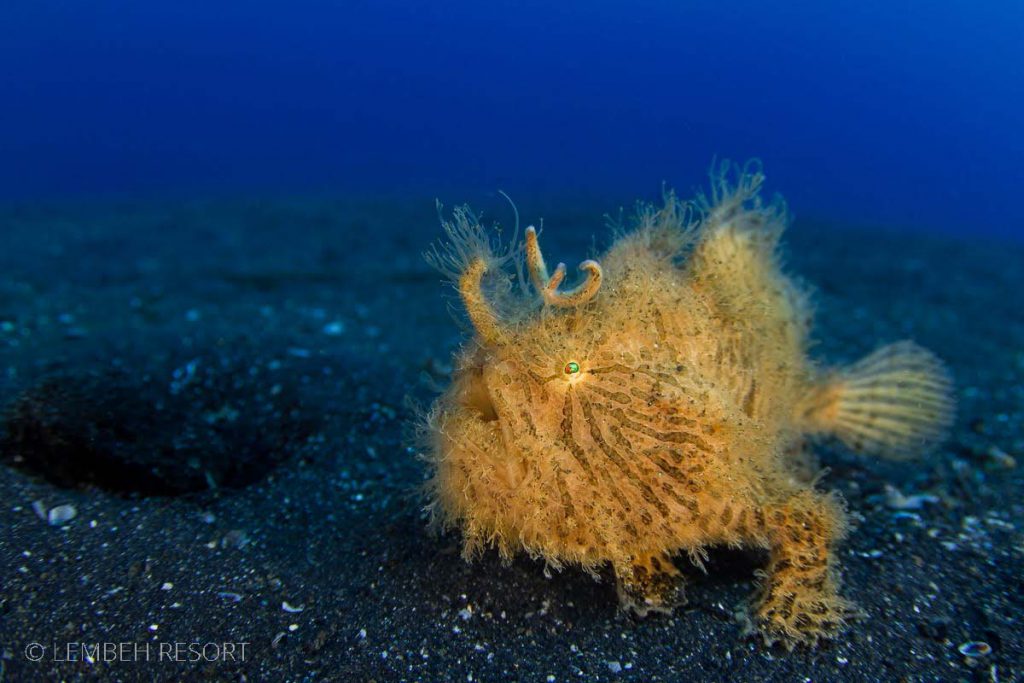
“Aggressive mimicry” occurs when a predator or parasite is the mimic, evolving to resemble its prey or host, respectively. The copycat adapts certain “recognition marks” from its model to get an advantage over the model itself or a third species.
In the deep sea, we have different species of anglerfish that use this type of mimicry to catch their prey. A fleshy appendage just above their lip wiggles like a worm and attracts unwitting smaller fish.
Saber-Toothed Blenny (Aggressive Mimicry)
Arguably the most infamous form of mimicry on the reef involves two tiny fish. The cleaner wrasse is very important on the reef. It helps other marine animals by cleaning their old wounds, removing parasites and pulling out dead scales. Cleaner wrasses attract “clients” to their cleaning stations by performing a hypnotic “dance” in the water column.
The saber-toothed blenny is another small reef fish. It has identical blue and black markings to the cleaner wrasse. It also lives in the same habitats and dances rhythmically (as seen in the video below). When bigger fish see the blenny’s dance and come looking for a cleaning, the mimic reveals its true intentions. It tears large chunks of flesh out of the duped clients before swimming away.


